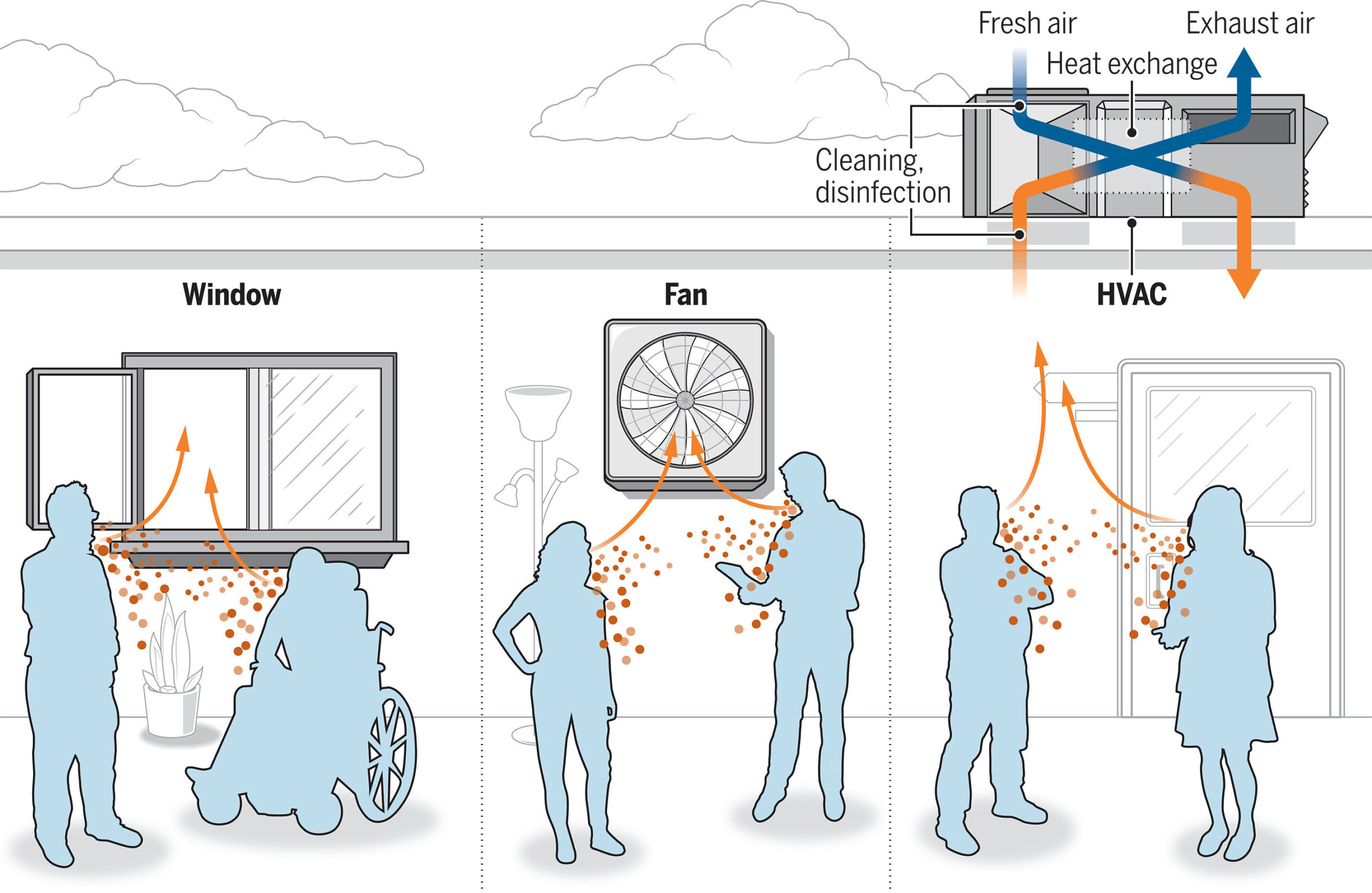Health
Scientists outline seven steps to achieve clean indoor air after the pandemic

Dilution and removal of exhaled bioaerosols in the indoor environment through ventilation measures. Credit: Science (2024). DOI: 10.1126/science.adp2241.
Leading air quality scientist Professor Lidia Morawska, Professor Yuguo Li from the University of Hong Kong and Professor Tunga Salthammer from the University of Hong Kong have learned seven lessons from the COVID-19 pandemic on the crucial role of ventilation in preventing the spread of pathogens in the air. University of Surrey, UK.
“Ventilation and Indoor Infection Transmission: Lessons Learned from the COVID-19 Pandemic” was published in Science.
Professor Morawska, Director of THRIVE, from QUT’s School of Earth and Atmospheric Sciences, said the rapid global spread of COVID-19 had quickly made it clear that the world was unprepared to respond appropriately.
“In the early days of the pandemic, the World Health Organization and many national health authorities claimed that the virus was ‘not airborne’ but rather present in large quantities on surfaces. This led to a misconception about how the virus was transmitted.” Professor Morawska said.
“Public health authorities rejected existing knowledge that led to misguided control measures focused on cleaning surfaces, rather than ventilation, filtration, face masking and deactivation of airborne viruses.
“However, from the outset, there was no doubt among science and engineering experts that the virus was primarily transmitted through the air and the most important control measure to reduce the risk of infection was to remove the viruses from the air through ventilation or inactivating it via UVC. radiation.”
Based on scientific and advisory activities of the article’s co-authors, they identified seven lessons of particular importance for indoor air quality (IAQ):
1. The first lesson is to develop tools through which interdisciplinary knowledge can contribute to public health decision-making.
The experts who advised WHO at the beginning of the pandemic were mostly public health experts and the value of physical, chemical and technical expertise was considered less relevant.
For example, current epidemiological investigations of outbreaks typically do not include measuring ventilation rates, resulting in an incomplete assessment.
2. Ventilation beyond the “open window” solution: Modern society cannot rely solely on natural ventilation in buildings that are not designed to provide sufficient and effective air supply.
Mechanical ventilation must be part of the solution. They offer various air supply techniques such as mixing, displacement and personal ventilation and air disinfection using germicidal ultraviolet radiation and filtration.
3. Building design and ventilation performance: Different types of buildings – homes, offices, shopping centers, airports, train stations, school buildings, etc. – are becoming increasingly complex, but are usually planned and built with design and operational constraints.
Sufficient ventilation, the basic function of making a building livable, is often not considered among the most important criteria. Building design and ventilation are closely linked and equally important in planning and operation.
4. Equivalent ventilation for existing buildings: Buildings such as aged care facilities and schools that are naturally ventilated cannot be easily or cost-effectively retrofitted. In such cases, equivalent ventilation is required using the techniques of air filtration and germicidal ultraviolet radiation.
Filtering does not remove water, carbon dioxide and gaseous pollutants from the air, but is “equivalent to ventilation” for particulate matter. Germicidal UV deactivates airborne pathogens, so it can be “equivalent to ventilation” with regard to infection control.
5. Ventilation control and risk assessment tools: Risk assessment tools are valuable in assessing the likelihood of airborne infection, but are too complex as a daily control measure in modern buildings. New technologies are being researched, developed or optimized to control the ventilation of buildings.
6. Monitoring ventilation performance: We have learned that ventilation performance must be monitored at all times when buildings are occupied so that ventilation control can be dynamically informed in response to building occupancy and use.
Numerous CO2 monitors are installed in modern buildings and an increase in cheap CO2 Sensors are available for continuous monitoring of ventilation performance in residential and transport cabins, with preference given to measuring CO2 being non-dispersive infrared (NDIR).
Modern devices are calibrated against reference methods and their performance can be improved using machine learning tools. The combination with other relevant parameters is possible and recommended.
7. IAQ made mandatory in public buildings: IAQ, like water and food, should be mandated and monitored by the relevant authorities. We have learned that without regulation, good indoor air quality cannot be guaranteed through the efforts of volunteer residents or even building operators if the building is not designed for this purpose and/or is not equipped with adequate technical systems.
The COVID-19 pandemic has shown us that ventilation is not only an important control measure to reduce the risk of airborne pathogen transmission, but also that ventilation should be considered as part of the control of indoor air against outdoor pollutants is generated, in addition to the transmission of infections. .
More information:
Lidia Morawska et al, Lessons from the COVID-19 pandemic for ventilation and indoor air quality, Science (2024). DOI: 10.1126/science.adp2241. www.science.org/doi/10.1126/science.adp2241
Quote: Scientists outline seven steps to achieve clean indoor air after the pandemic (2024, July 26), retrieved July 27, 2024 from https://medicalxpress.com/news/2024-07-scientists-indoor-air-pandemic.html
This document is copyrighted. Except for fair dealing purposes for the purpose of private study or research, no part may be reproduced without written permission. The content is provided for informational purposes only.













